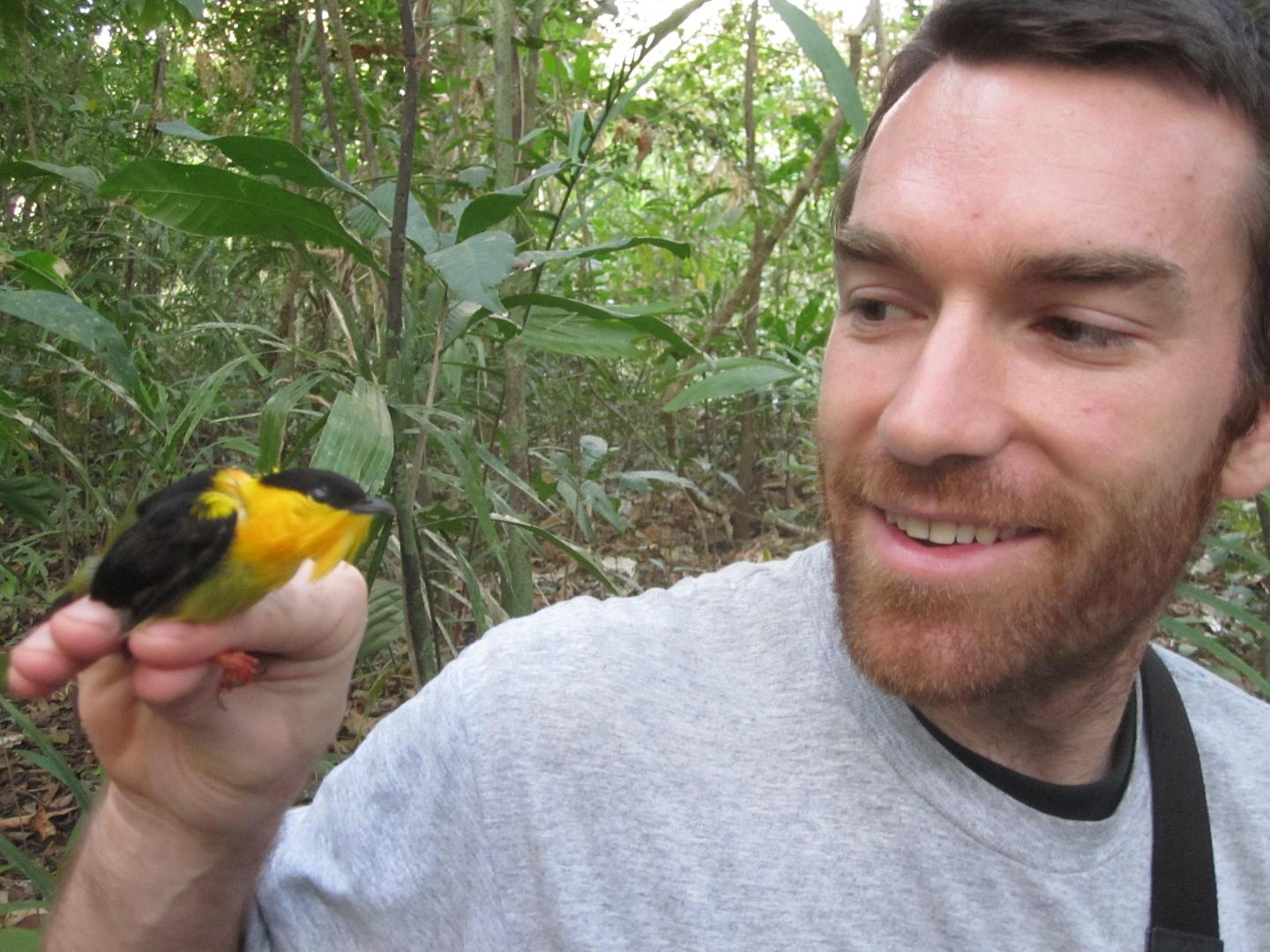There are about 60 different species of manakins, most of which perform, to some degree, a physically complex display behavior to both court females and to compete with other males. The new study says the ability to detect testosterone in the body regulates the acrobatic courtship and competitive behavior - bird brawn.
The researchers hypothesized that evolution acts to help shape the mating display behavior by controlling androgen sensitivity in the avian wing muscles. They measured androgen receptor (AR) levels in these tissues in multiple species of manakins that varied in terms of the physical complexity of their display to see whether this measure of androgen sensitivity corresponds to species differences in physical complexity of the display.
What they found is that those birds with more complex displays had muscles more sensitive to testosterone.

Photo provided by Matthew Fuxjager
"Our results provide the first evidence that androgenic sensitivity in select parts of the neuro-motor system is an evolved mechanism to facilitate performance abilities and acrobatics in physically elaborate socio-sexual displays," said Wake Forest asistant professor of biology Matthew Fuxjager about the work in Functional Ecology. "This research has some interesting implications for how evolution exploits testosterone's ability to influence muscle and natural forms of athleticism. Our current data support the hypothesis that sexual selection shapes levels of androgen receptors expressed in the forelimb skeletal muscles to help drive the evolution of adaptive motor abilities."
Fuxjager said elaborate physical displays are found in most species, but little is known about how physically complex movements are linked to sexual reproductive behavior or fighting.






Comments